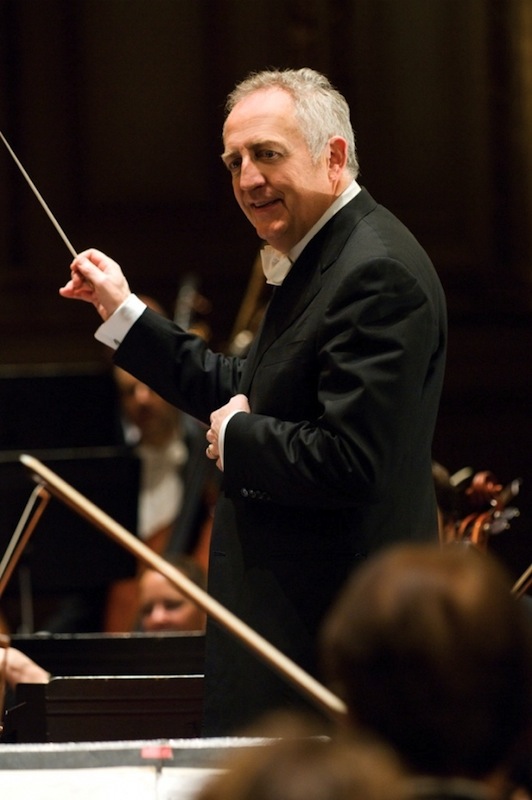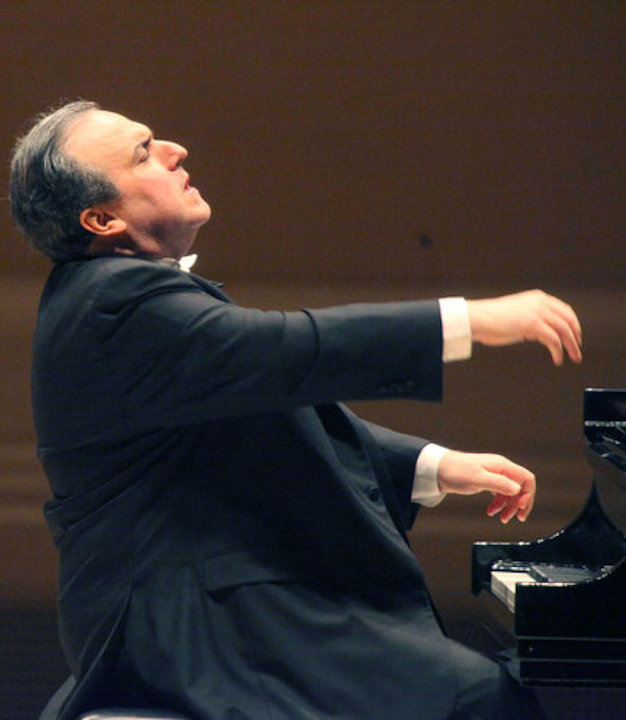Bronfman’s Bartók enlivens post-holiday week with Philharmonic

Bramwell Tovey conducted the New York Philharmonic Wednesday night at David Geffen Hall.
During the week between Christmas and New Year’s one might expect routine programming and Wednesday night at the New York Philharmonic, one would be right. There was a standard program of overture, concerto, and symphony, framed by populist favorites by Smetana and Mussorgsky. Also visiting conductor Bramwell Tovey and soloist Yefim Bronfman fronted an orchestra sprinkled with replacements for principal players like concertmaster Frank Huang and principal clarinetist Anthony McGill.
The pleasurable surprise was how little routine there was. Most of the concert was impressive for how well the orchestra was prepared for everything on the menu. Some of the brass showed fatigue in Mussorgsky’s Pictures at an Exhibition, but they were never off the mark with entrances, rhythms, or dynamics. With new, temporary faces and limited rehearsal time, that spoke to Tovey’s podium skill.
The opener–Smetana’s Bartered Bride Overture–had one sitting up in one’s seat almost immediately. It opened energetically, as it should. Every player in every section was right on the mark, the playing was fleet, and it was a thrill to hear the notes spin by in such clear articulation. The strings’ playing was so dazzling and enjoyable that it was almost a disappointment each time the music slowed for a stretch of static chords.
Yefim Bronfman also comes with expectations. He’s an exceptional musician who somehow, likely for extra-musical reasons, is frequently eclipsed in the imagination by other pianists. Yet his playing is consistently thrilling, powerful, and expressive, and such was the case again Wednesday in Bartók’s Piano Concerto No. 2.

Yefim Bronfman
This is one of Bartók’s most emblematic works, with all his elements—physical earthiness, classical refinement, humor, a slow, eerie line—that only he could write, alongside some of the extroverted brightness he adapted from Stravinsky.
Bartók’s Second Concerto has plenty of opportunities for the soloist to bang away and cut through the orchestra, but the work also demands sharp articulation, with music that is fast and legato and requires a light touch. Bronfman indeed cut through the orchestra with customary strength. Yet he also had a lovely, smooth touch, with fast and fluid passages glistening like a stream under bright sunlight.
The dialogues between pianist and orchestra were especially impressive, Bronfman underlining the folk music and the orchestra responding with poise. In the middle movement, Bronfman played the sparse part in the slow music with a touch of understatement, a hesitancy that set up a good contrast with the scherzo-like flurry of notes in the fast music. The orchestra chattered teasingly behind him.
In this excellent performance, everyone—soloist, conductor, orchestra members—sounded as if they fully imbibed and understood this music. Bartók’s logic and expression are unique, not easily assimilated, and it all sounded perfectly natural.
Bronfman returned for an encore, offering, as he usually does, a stark contrast to the main work. Wednesday it was a warm and personal account of Chopin’s Etude in E major, Op. 10, no. 3, rendered with the intimate feeling of peeking over his shoulder as he played for his own pleasure.
After intermission, Mussorgsky’s Pictures at an Exhibition was just as polished and skillful as everything in the first half, but it seemed that some of the previous spirit had dissipated.
The performance was surprisingly dry, feeing like Tovey was thinking about this showpiece as a concerto for orchestra. Each section pressed their stretches to the fore with a sense of musical pride. The brass came together with a wall of bright, flawless sound and an extra amount of presence, and the percussionists were having a great time in the final “The Great Gate of Kiev.”
Still, despite the surface energy, there was nothing especially vivid about the playing or the sound. The Philharmonic used the standard Ravel orchestration, and most of the colors felt muted, pastels instead of acrylics. The tender, haunting, or strange movements, like “The Old Castle” and “Catacombs” were smooth but neither tender nor haunting, feeling highly professional yet somewhat dutiful.
The program will be repeated 7:30 p.m. Thursday, and 8 p.m. Friday and Saturday. nyphil.org


